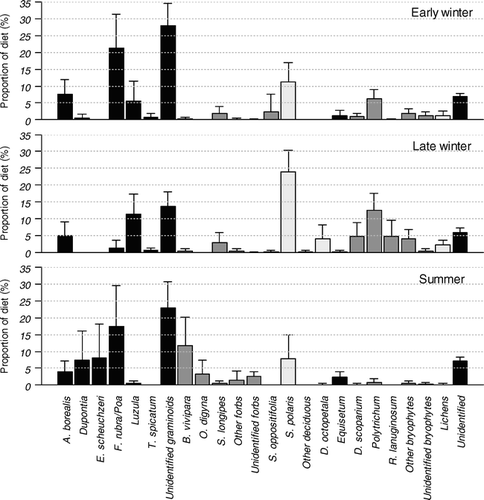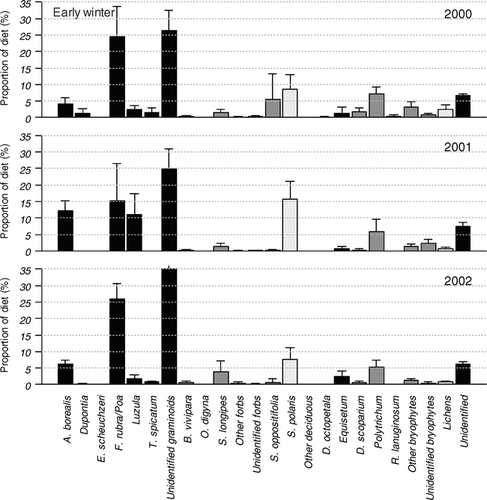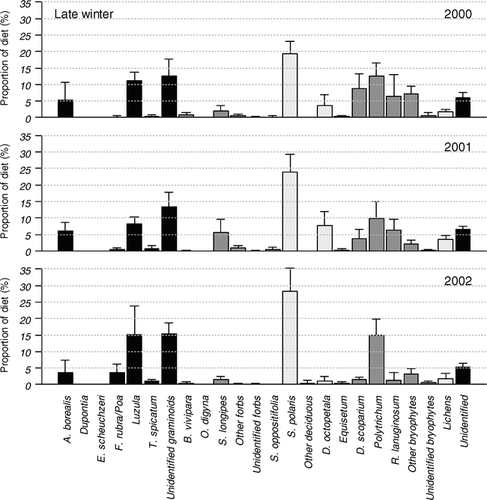Figures & data
Figure 1 Percentages of species/species groups ± SD across individuals in the diet in the early winter (n = 26), the late winter (n = 24), and the late summer (n = 22) based on rumen samples from female Svalbard reindeer (Rangifer tarandus platyrhynchus) culled during 1999–2002. The different growth forms are displayed using different shadings; graminoids (from left), forbs and evergreen cushion plants, deciduous and evergreen shrubs, sphenophytes, bryophytes, lichens, and unidentified plant fragments.

Figure 2 Percentages of species/species groups ± SD across individuals in the early winter diet in 2000 (n = 10), 2001 (n = 10), and 2002 (n = 6) based on rumen samples from female Svalbard reindeer (Rangifer tarandus platyrhynchus). The different growth forms are displayed using different shadings; graminoids (from left), forbs and evergreen cushion plants, deciduous and evergreen shrubs, sphenophytes, bryophytes, lichens, and unidentified plant fragments.

Figure 3 Percentages of species/species groups ± SD across individuals in the late winter diet in 2000 (n = 8), 2001 (n = 8), and 2002 (n = 8) based on rumen samples from female Svalbard reindeer (Rangifer tarandus platyrhynchus). The different growth forms are displayed using different shadings; graminoids (from left), forbs and evergreen cushion plants, deciduous and evergreen shrubs, sphenophytes, bryophytes, lichens, and unidentified plant fragments.
